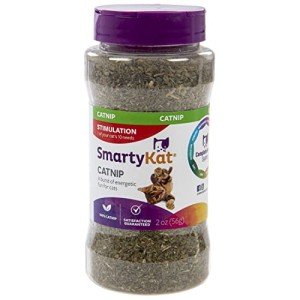Why You Should Keep Your Cat Inside or in a Cat Run in Australia
In Australia, the decision to keep your cat indoors or within a secure cat run is more than just a matter of personal preference—it’s a choice that impacts your cat’s safety and health, as well as the survival of the country’s unique and vulnerable wildlife. Cats are beloved companions, but their natural instincts and behaviors can have unintended consequences when they’re allowed to roam freely. With Australia’s delicate ecosystems already under pressure, responsible cat ownership is critical. This article explores why keeping your cat indoors or in a cat run is the best option for both your feline friend and the native wildlife that calls Australia home.
The Safety and Health of Your Cat
Cats are curious, agile, and independent creatures, which makes them prone to a variety of dangers when they roam outdoors. In Australia, these risks are amplified by the country’s unique environment and urban challenges. Keeping your cat indoors or in a cat run can significantly reduce these hazards and improve their overall well-being.
One of the most immediate threats to roaming cats is traffic. Australia’s suburban and rural roads see plenty of vehicles, and cats—especially those wandering at night—are at high risk of being struck. According to the RSPCA Australia, thousands of cats are injured or killed in road accidents each year. Indoor cats or those confined to a cat run are entirely protected from this danger, giving owners peace of mind.
Beyond traffic, roaming cats face threats from other animals. In urban areas, dogs or even aggressive stray cats can attack, leading to severe injuries or fatal fights. In rural or bushland settings, encounters with wildlife like snakes—many of which are venomous in Australia—pose a lethal risk. A bite from an eastern brown snake or a red-bellied black snake can kill a cat within hours if untreated, and veterinary intervention isn’t always possible in time. An indoor environment or a secure cat run eliminates these risks, ensuring your cat doesn’t become a victim of Australia’s wilder inhabitants.
Health is another critical consideration. Roaming cats are more likely to contract diseases or parasites. Feline immunodeficiency virus (FIV), often spread through bites during territorial fights, is a significant concern for outdoor cats in Australia. Fleas, ticks, and intestinal worms are also more common in cats that roam, requiring frequent and costly treatments. Indoor cats, or those in controlled outdoor spaces, have a lower exposure to these health threats, leading to longer, healthier lives. Studies suggest that indoor cats live an average of 12-18 years, compared to just 2-5 years for outdoor cats, largely due to these preventable risks.
Mental stimulation and exercise are sometimes cited as reasons to let cats roam, but these needs can be met indoors or in a cat run. Enrichment through toys, climbing structures, and interactive play can keep a cat physically active and mentally engaged. A well-designed cat run—a secure, enclosed outdoor space—offers the best of both worlds: fresh air and sunshine without the dangers of roaming. In Australia, where summer heatwaves and UV exposure can also harm cats, a shaded cat run provides a safe alternative to unrestricted outdoor access.
The Safety of Australian Wildlife
While keeping your cat indoors or in a cat run protects them, it also plays a vital role in safeguarding Australia’s native wildlife. Cats are natural hunters, and even well-fed domestic cats will stalk and kill birds, lizards, and small mammals out of instinct. In Australia, this predatory behavior has devastating consequences for species that have evolved with little to no defenses against such efficient hunters.
Australia’s wildlife is uniquely vulnerable due to its isolation from the rest of the world for millions of years. Many native animals, such as bilbies, quokkas, and ground-nesting birds, are “naive” to predators like cats because they didn’t co-evolve with them. When domestic cats roam, they contribute to an already catastrophic problem exacerbated by feral cats—descendants of escaped or abandoned domestic cats that now number in the millions across the continent.
The toll of roaming and feral cats on Australian wildlife is staggering. A 2017 study published in Biological Conservation estimated that cats (both feral and domestic) kill more than 1 million native birds, 1.7 million reptiles, and 1.1 million mammals in Australia every single day. Over a year, this amounts to over 1 billion native animals lost to cat predation. Iconic species like the eastern barred bandicoot, the numbat, and countless small marsupials have been pushed to the brink of extinction, with roaming cats playing a significant role alongside habitat loss and feral cat populations.
Even a single roaming cat can wreak havoc on local wildlife. Research from the Australian National University found that the average roaming domestic cat kills around 75 animals per year, regardless of whether it’s hungry. This includes lizards, frogs, and small birds like the superb fairy-wren—species already struggling to survive in fragmented habitats. In contrast, an indoor cat or one confined to a cat run has no opportunity to hunt, making it a simple yet effective way for cat owners to reduce their ecological footprint.
Feral cats amplify this crisis, but roaming domestic cats add unnecessary pressure. Unlike feral cats, which live entirely in the wild, roaming pets have owners who can take action. By keeping your cat contained, you’re not only protecting wildlife directly but also preventing your cat from contributing to the feral population. Unsterilized roaming cats can breed with ferals, producing kittens that grow up wild and further strain ecosystems. Responsible containment, combined with desexing, is a proactive step toward curbing this cycle.
Balancing Cat Welfare and Conservation
Some cat owners worry that keeping their pet indoors or in a cat run is restrictive or unnatural. However, with the right approach, it’s possible to meet a cat’s needs while protecting both their safety and Australia’s biodiversity. Indoor environments can be enriched with scratching posts, perches, and puzzles that mimic hunting behaviors. Cat runs, which can be attached to a house or built as standalone structures, allow cats to experience the outdoors safely. These enclosures can include grass, plants, and climbing opportunities, offering sensory stimulation without the risks of roaming.
Local governments and conservation groups across Australia increasingly advocate for cat containment. In some areas, like the Australian Capital Territory and parts of Victoria, bylaws require cats to be confined to their owner’s property, reflecting the growing recognition of their impact on wildlife. These measures aren’t about punishing cat owners but about fostering a harmonious coexistence between pets and the environment. By adopting containment practices voluntarily, owners can stay ahead of regulations while doing their part for conservation.
The financial and emotional costs of letting cats roam also outweigh the effort of containment. Veterinary bills from injuries, disease, or parasite treatments can add up quickly, not to mention the heartache of losing a pet to a preventable accident. Conversely, investing in a cat run or indoor enrichment is a one-time expense that pays off in a longer, healthier life for your cat and a cleaner conscience regarding wildlife.
Conclusion
Keeping your cat indoors or in a cat run in Australia is a win-win decision. It shields your feline companion from the myriad dangers of roaming—traffic, predators, disease, and harsh weather—while ensuring they live a longer, healthier life. Simultaneously, it protects Australia’s naive and irreplaceable wildlife from the predatory instincts of domestic cats, contributing to the broader effort to mitigate the damage caused by roaming and feral cats. With over a billion native animals killed annually by cats, every contained pet makes a difference. By embracing responsible cat ownership, Australians can enjoy the companionship of their cats without compromising the safety of their pets or the survival of the country’s extraordinary biodiversity. It’s a small adjustment with a profound impact—one that every cat owner in Australia should consider.




